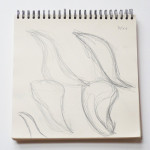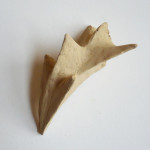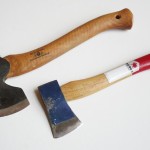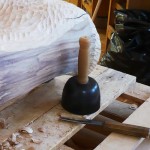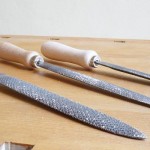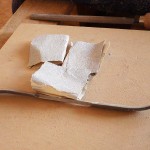Making a sculpture requires a set of tools and methods that depend on the material I work with and the personal approach of how I work. My regulars are: sketches, clay, hatchets, gouges and mallet, rasps, files, sand paper. In addition I need a framework that support my process. These include space, time, food, a room where I can shut the door and be on my own, and a platform for the piece I’m working on which is high enough to avoid an aching back.
Each tool requires a different state of mind, different movement of the body and a different perspective, a way of positioning myself in relation to the wood. The hatchet is the most intuitive of all of them. The best position to work with it is crossways to the direction of the fibres. It works best on fresh, wet wood. The gouge is more often used in the direction of the fibres but can in general be used in many directions. Coordinating the movements of gouge and mallet is a slightly more conscious process. Gouges work on wet as well as dry wood. Its just a little harder with dry ones. The rasp doesn’t need to take into account fibre directions much as long as the wood is dry. It follows the surface or the idea of the surface I want to achieve. Thus the whole body follows in the movement. Sanding is much the same but the wood definitely has to be dry.
